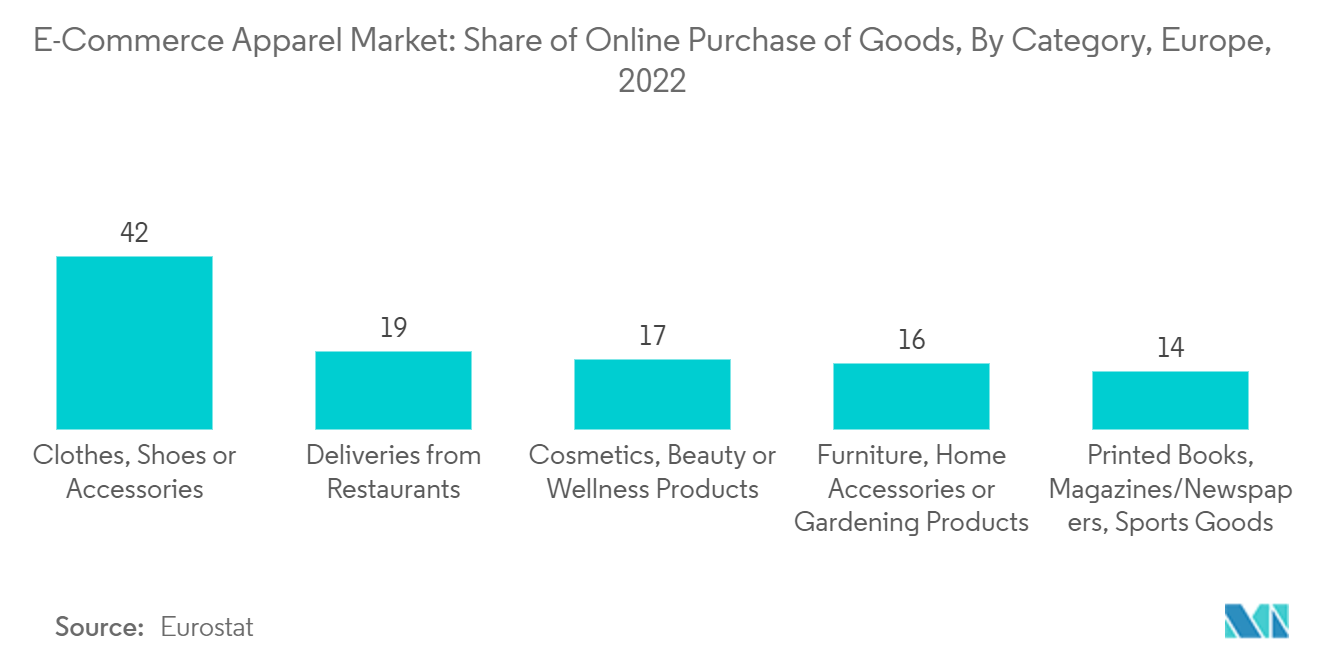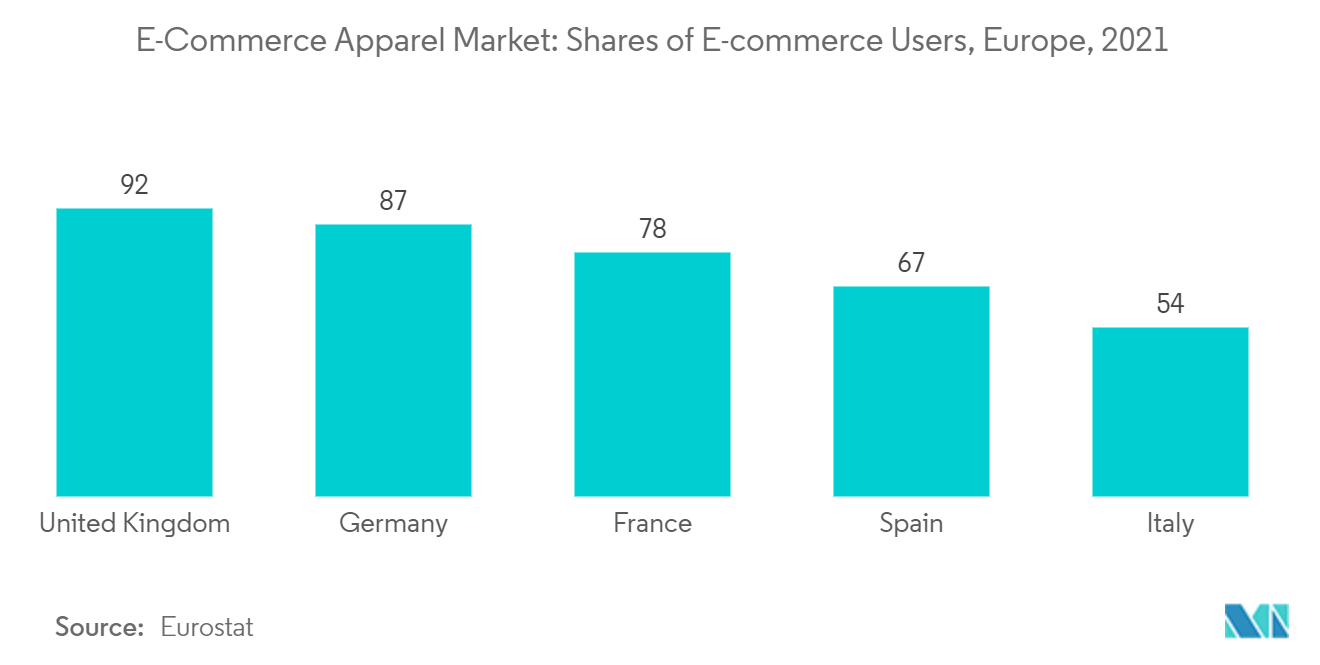Market Trends of Europe E-Commerce Apparel Industry
Online Retailers Offering Seamless Shopping Experience
- Customers can buy apparel in the comfort of their homes by clicking a few keys owing to the variety of applications and websites available. Further, busy and hectic lifestyles drive the e-commerce apparel market. Moreover, customers have the choice of where to shop when purchasing online, and they can still browse for clothes online from the comfort of their own homes or on the go.
- Additionally, one can potentially save a tonne of time and effort by shopping online. Since there's access to countless brands and online shops from a smartphone or desktop, it makes them simpler to find the things they desire. People use their preferred search engine to find a specific clothing item from a variety of stores. This is much more convenient than driving and walking around several stores just to find a single product.
- Additionally, another trend gaining traction in fashion e-commerce or e-commerce, in general, is the adoption of chatbots. A growing number of D2C companies are currently implementing chatbots for customer-facing interactions, such as resolving customer inquiries and customer engagement to cross-sell and upsell. For instance, brands such as ASOS, Burberry, Levi's, and Tommy Hilfiger have all adopted retail chatbots to bridge the gap between the customer and the retailer in a more convenient and personalized way.
- Moreover, online shopping opens up a world of options for the customer as people can shop using international/global platforms. This makes it more convenient for consumers to find niche and specialized clothing that may not be readily available in local stores. Furthermore, shopping for clothes online allows individuals to enjoy privacy while shopping. Also, customers do not need to struggle with the inconvenience of shopping in a crowded establishment or standing in long queues for changing rooms and at billing counters during the festive season or when there is a sale. Therefore, customers are more driven toward the e-commerce apparel market.
- For instance, in October 2022, in Poland, the Sinsay clothing brand mobile app recorded 2.5 million downloads in less than six months since its launch and is the most-downloaded app in the "free apps" and "shopping" categories on the AppStore and Google Play. Further, the company claims that currently, they make around 30% of the brand sales through e-commerce orders.

United Kingdom Holds the Largest Market Share
- The United Kingdom holds a significant market share in the Europe e-commerce apparel market as the country was an early adopter of e-commerce. The United Kingdom has a well-established online shopping culture, and customers have embraced e-commerce for purchasing apparel. Online shopping is a convenient choice for purchasing apparel, considering it provides convenience, a wide range of options, and competitive pricing.
- According to Office for National Statistics (UK), in February 2023, internet sales accounted for over 24.3% of textile, clothing, and footwear stores in Great Britain. Hence, the above-mentioned factors drive the e-commerce apparel market in this country. Further, according to the Centre for Retail Research Organization survey, they stated that online sales are expected to account for 28.9% of the online retail industry in 2021.
- Many apparel companies and retailers in the United Kingdom are embracing an omnichannel strategy, merging their online and offline platforms. Customers can browse and purchase apparel online, opt for click-and-collect alternatives, and experience seamless returns and exchanges across several channels. This integration seeks to improve consumer satisfaction by providing a consistent purchasing experience. For instance, in June 2022, Primark announced plans to test click-and-collect services for their childrenswear, which ranges from newborn babywear to age 15 years, in the United Kingdom. The experiment will take place in up to 25 locations in the northwest of England, and customers will have access to an estimated 2,000 selections of children's apparel, accessories, and lifestyle products.
- Customers will be able to make purchases online and add products to their virtual shopping cart before checking out and paying for their purchases. They will subsequently be able to pick up the products at a newly established dedicated customer collection point in the heart of the participating stores. E-commerce platforms and apparel brands continue to adapt and innovate to meet the changing demands and preferences of United Kingdom consumers. As a result, all these factors, along with consumer inclination towards fashion, indicate a positive growth of the e-commerce apparel market in the United Kingdom.


